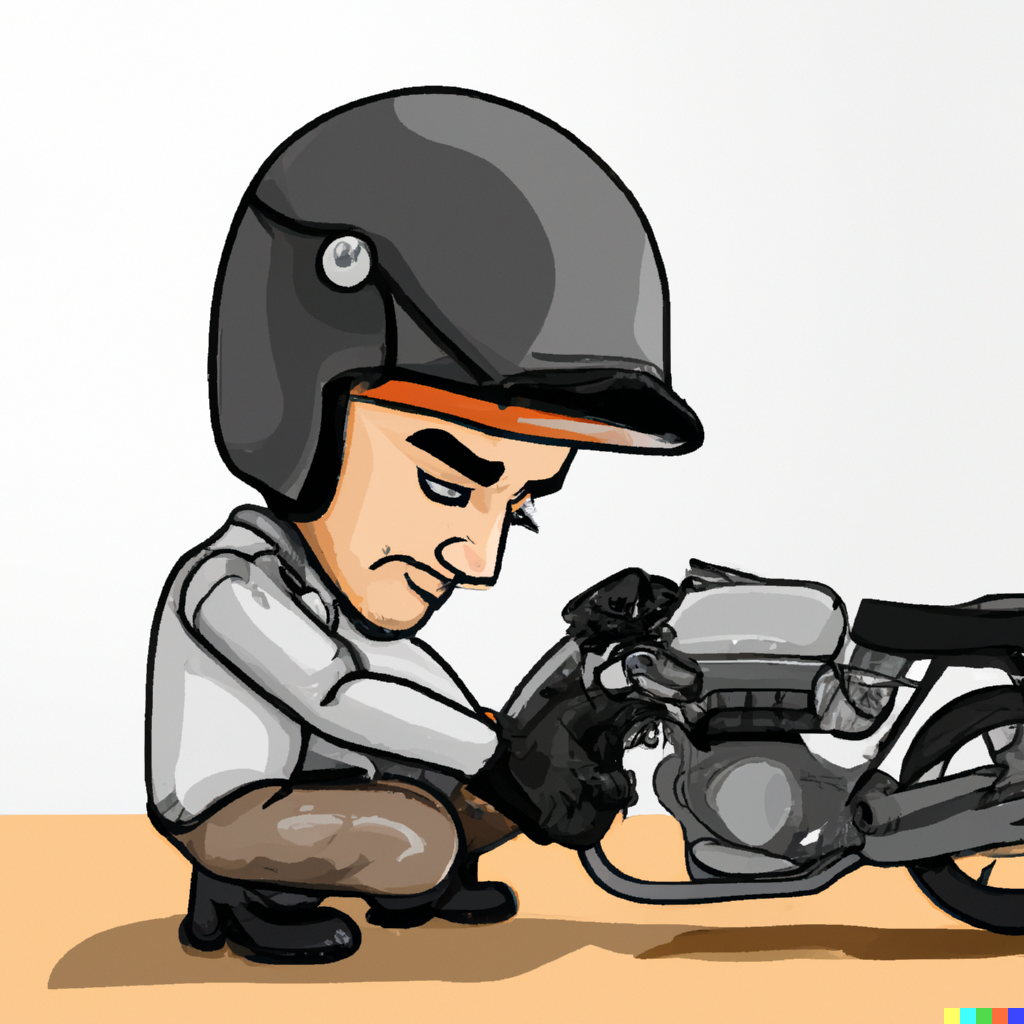P.O.W.D.E.R
Acronym for Petrol, Oil, Water, Damage, Electrics and Rubber.
- Petrol – make sure you have enough fuel for the journey. Does your machine have a reserve tank switch or just a warning light?
Can you turn the fuel tap to reserve while on the move, without taking your eyes off the road? Do you know where the tap is? - Oil – How do you check the oil level on your machine? Most dry sump machines require you to check the oil when the engine is hot, while most wet sump machines should have their oil level checked with the engine cold. Which type is yours? The owner’s handbook will tell you how to perform this check correctly. Is your machine a two stroke or a four stroke? On a two stroke machine the two stroke oil should be checked every time you fill up with petrol, and on a four-stroke machine the procedure for checking the oil level varies. Is it dipstick or sight glass? Should it be checked on a hot or cold engine? Having this knowledge about your machine is incredibly important. Without it, you may be looking at a major repair bill for engine seizure and/or crash damage.
- Water – How do you check the coolant level? Where is the filler cap? Opening the radiator cap when the engine is hot is inviting the risk of serious scalding, so ensure it is cool before removing. Is your machine water or air cooled?
- Damage – Check the bike for signs of obvious damage. Are the extremities of the machine scuffed, such as indicators, bar-end weights and levers? Are the light lenses or mirrors cracked or broken? Noticeable buckles in the rims? Any drips or pools under the bike? Check for damage to the tyre walls and rim. Your machine could have been knocked over while unattended or it could have been borrowed during the day without your knowledge.
- Electrics – Are you sure all your lights and signals are clean and working? Don’t wait until you need to use your horn to discover it is faulty, always check your signals before a journey. Is your faulty brake light inviting a rear end shunt? Do you know where the fuses are and can you replace them? Do you carry replacement bulbs?
- Rubber – Your tyres form a contact patch with the road no bigger than the palm of your hand and are thus an essential component of motorcycle safety. That contact is (literally) all that stands between you and the tarmac! Too much air in your tyres reduces grip by making the tyre stand proud of the road surface. Too little air promotes instability because it allows the side walls of the tyres to flex.
F.I.G.S.
Acronym for Fuel, Ignition, Gears and Start.
- Fuel – Check you have enough fuel to undertake the journey planned. If a fuel tap is fitted to the machine, does the motorcyclist understand the different positions (on, reserve and off etc.)? On a two stroke machine is the oil/fuel mixture correct?
- Ignition – Is there an immobiliser or an alarm fitted to the motorcycle? When ignition is switched to its ‘on’ position, (1st position) are all the relevant ignition lights operating? Some motorcycles have a built in self-diagnosis system. The speedo and rev counter needles will rotate all the way to the right and return to their standard position; this will normally indicate that all is o.k. Does your machine have this type of system? Is the motorcycle electric or kick start? Understand the importance of shutting off the ignition not the emergency cut off switch (red switch).
- Gears – Ensure the motorcycle is in neutral. Even if the green neutral light is showing, knowing how to check for a false neutral is important.
- Start – Having covered the different procedures above it should now be safe to start the motorcycle. It is important to always remember to retract stands, especially side stands. Most modern motorcycles are fitted with a switch that shuts down the engine if gear is engaged while the side stand is down.


0 Comments